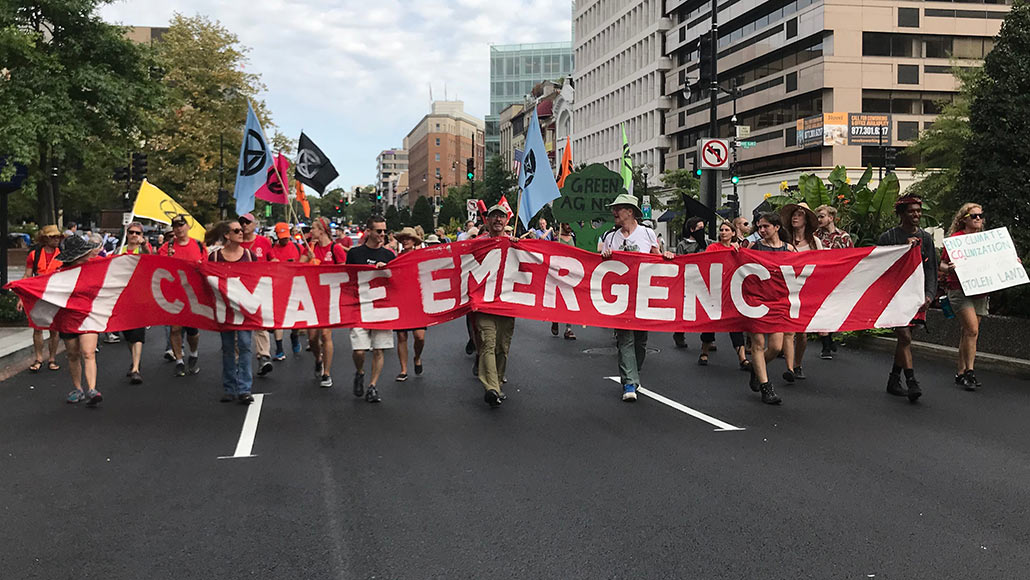
Protestors blocked roads and marched in Washington, D.C., to urge the U.S. government to curb greenhouse gas emissions. It was one of many protests around the world on September 23 drawing attention to human-caused climate change.
Jed Winer, ShutDownDC/strikedc.org
- More than 2 years ago
Earth’s oceans and frozen regions are changing alarmingly quickly, scientists warn in the first comprehensive look at how greenhouse gas emissions are altering the planet’s seas and cryosphere.
Since 1993, the rate of warming in the oceans has more than doubled, scientists report in a new study by the U.N. Intergovernmental Panel on Climate Change, or IPCC. Melting of the two great ice sheets blanketing Greenland and West Antarctica is speeding up as well, accelerating sea level rise. And West Antarctica’s glaciers may already be so unstable that they are past the point of no return.
“The consequences for nature and humanity are sweeping and severe,” Ko Barrett, IPCC vice-chair and head of research at the National Oceanic and Atmospheric Administration, said at a news conference September 24. Rising seas are already threatening low-lying coastal areas that today are home to 680 million people, about 10 percent of the world’s population.
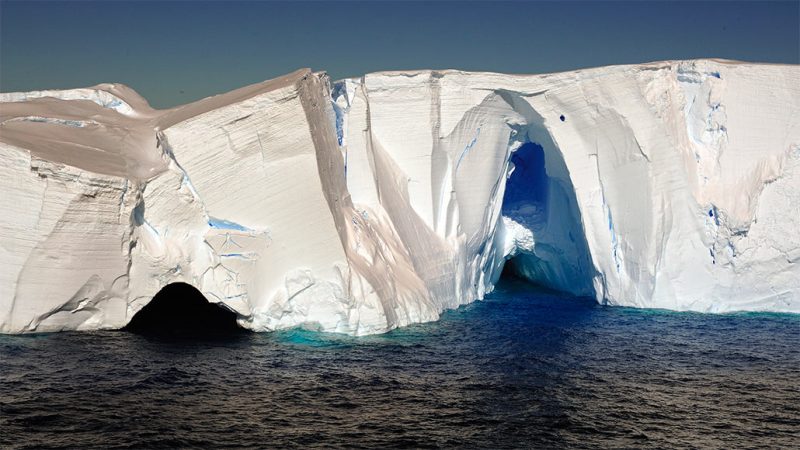
The Sept. 25 release of a summary of the report coincided with the U.N. Climate Action Summit in New York City. And it came amidst a surge of global protests, climate strikes and calls for nations around the world to dramatically curb greenhouse gas emissions in hopes of limiting future warming.
Such action can’t come too soon, scientists say. Already, warming ocean waters are yielding fewer fish (SN: 2/28/19), and are fueling more intense, rainier tropical storms (SN: 9/28/18). Ocean heat waves are increasing, threatening corals and other sea life (SN: 4/10/18). Greenland (SN: 9/18/19) and the West Antarctic ice sheet (SN: 8/5/19) are rapidly shedding ice, accelerating sea level rise to a rate of 3.5 millimeters per year. And Arctic sea ice continues to dwindle (SN: 3/14/19); minimum sea-ice extent in 2019 tied with 2007 and 2016, according to data released by the National Snow and Ice Data Center on September 23. That’s the second-lowest extent on satellite record, after 2012.
“The ocean has largely been left out of the discussion on climate,” says Becca Gisclair, senior director of Arctic Programs for the Ocean Conservancy in Bellingham, Wash., who was not involved in the IPCC study. The new report emphasizes the need to “slash emissions, and do it quickly, or these impacts highlighted in the report will quickly become irreversible…. My hope is that seeing all of these impacts in one place can highlight the need for action.”
Open water
The extent of sea ice in the Arctic Ocean reached its minimum for the year — 4.15 million square kilometers — on September 18, tying for the second lowest minimum in the satellite record with 2007 and 2016. The lowest measured sea ice extent was in 2012.
Minimum extent of Arctic sea ice in 2019
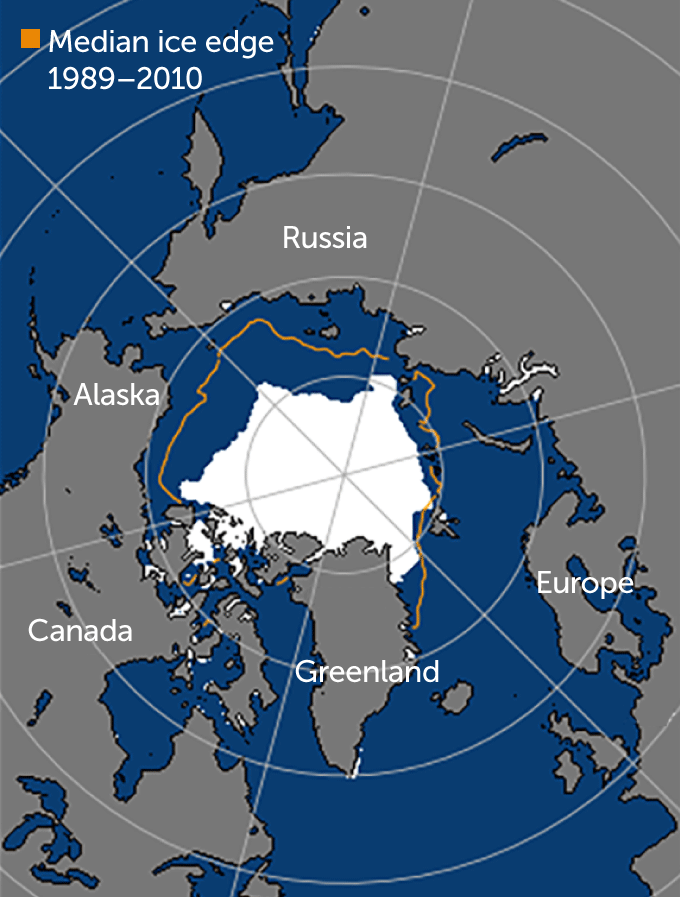
The report is one of several special reports focusing on the latest science on specific aspects of climate change that the IPCC releases in between its large, sweeping assessments. Since the IPCC’s Fifth Assessment Report came out in 2013, scientists have learned a great deal about the impacts of absorbing atmospheric carbon dioxide on the oceans and their denizens, as well as in coastal areas, says Sarah Cooley, director of the Ocean Conservancy’s ocean acidification program in Washington, D.C. For this new report, 104 scientists from 36 countries evaluated 6,981 studies to determine the impact on the world’s oceans and ice-covered regions.
While the IPCC report rings an alarm bell, there is hope, says climate scientist Ove Hoegh-Guldberg, who heads the Global Change Institute at the University of Queensland in Australia. The ocean isn’t just part of the problem, Hoegh-Guldberg says — it should be a key part of the solution. “What’s surprising is how quickly we can limit the damage,” Hoegh-Guldberg says, a message that he says was also embedded within the IPCC’s 2018 special report on 1.5 degrees Celsius of warming, for which he was a contributing author (SN: 12/17/18).
Hoegh-Guldberg and colleagues recently assessed ways to harness ocean resources to reduce or mitigate global greenhouse gas emissions. The study, commissioned by a group of 15 world leaders called the High Level Panel for a Sustainable Ocean Economy, was released September 23 by the World Resources Institute. In it, the researchers highlight five ocean-related activities that they say can help slow warming:
- Build offshore wind farms and other ocean-based renewable energy to shift away from dependence on fossil fuels;
- Eliminate carbon emissions from the shipping industry;
- Restore coastal ecosystems such as mangroves and salt marshes, which not only store carbon but also provide myriad benefits, including serving as buffers against tropical storms, filtering pollutants and providing habitat for fish and other wildlife;
- Harvest more ocean-based protein sources, which have a much lower carbon footprint than any land-based animal protein;
- Store carbon in the seafloor, which theoretically has high potential for mitigating greenhouse gas emissions, but also a lot of uncertainty in terms of its environmental impact.
Those five activities have the potential to account for as much as 21 percent of the emissions reductions needed by 2050 to limit warming to 1.5 degrees Celsius above preindustrial times by the end of the century, Hoegh-Guldberg and colleagues write in the Sept. 27 Science. That help is sorely needed. Human activity has already increased global temperatures by 1.1 degrees C, and studies suggest that global emissions are now on track to blow past midcentury targets needed to achieve 1.5 degrees (SN: 7/1/19).
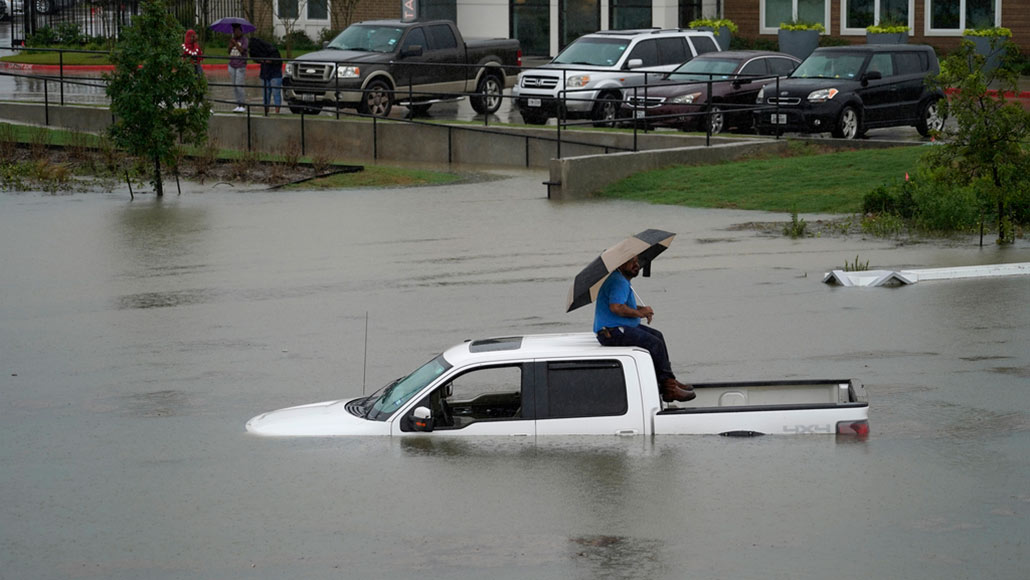
Taken together, the two new studies provide “a nice point-counterpoint,” says Jane Lubchenco, a marine biologist at Oregon State University in Corvallis. Lubchenco, who ran NOAA from 2009 to 2013 under President Barack Obama, is a co-chair of the High Level Panel’s expert group of researchers and policy analysts. The IPCC special report “shines a very bright spotlight on the ocean as a victim,” Lubchenco says. “But it is also a powerful source of solutions.”
None of these potential solutions are new concepts, but there has been little political will to invest in the necessary research and development to move them forward, Hoegh-Guldberg says. These actions may finally get some traction in December, when nations head to Santiago, Chile, for COP25, the annual meeting to review progress of the U.N. Framework Convention on Climate Change.
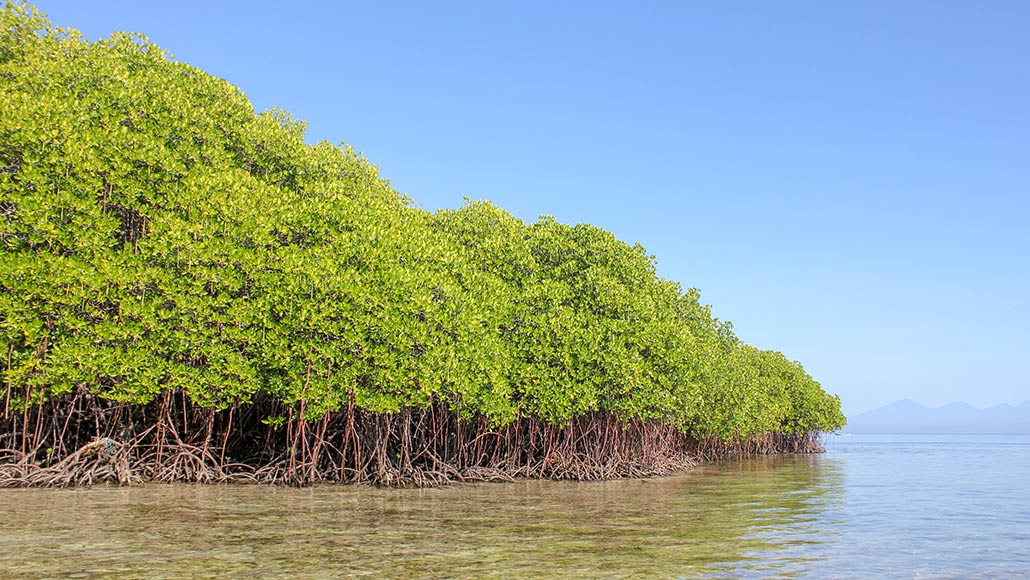
At the COP21 meeting in Paris in December 2015, 195 nations signed on to the 2015 Paris climate agreement, pledging to reduce global greenhouse gas emissions enough to keep global warming to “well below” 2 degrees C above preindustrial times (SN: 12/12/15). The United States was one of the signing nations, but President Donald Trump has said he plans to withdraw the country from the accord in 2020 (SN: 6/1/17).
Chile President Sebastián Piñera has said COP25 will be the “Blue COP,” emphasizing the central role that he expects ocean economies to play in the discussions. The U.N. climate meeting in December is also a prelude to a 2020 deadline for Paris Agreement signatories to submit revised and increasingly ambitious plans to reduce their emissions.
Ocean-based mitigation solutions could become a big part of those plans, Gisclair says. “There is a big opportunity there for countries to make new climate commitments that include the ocean.”






